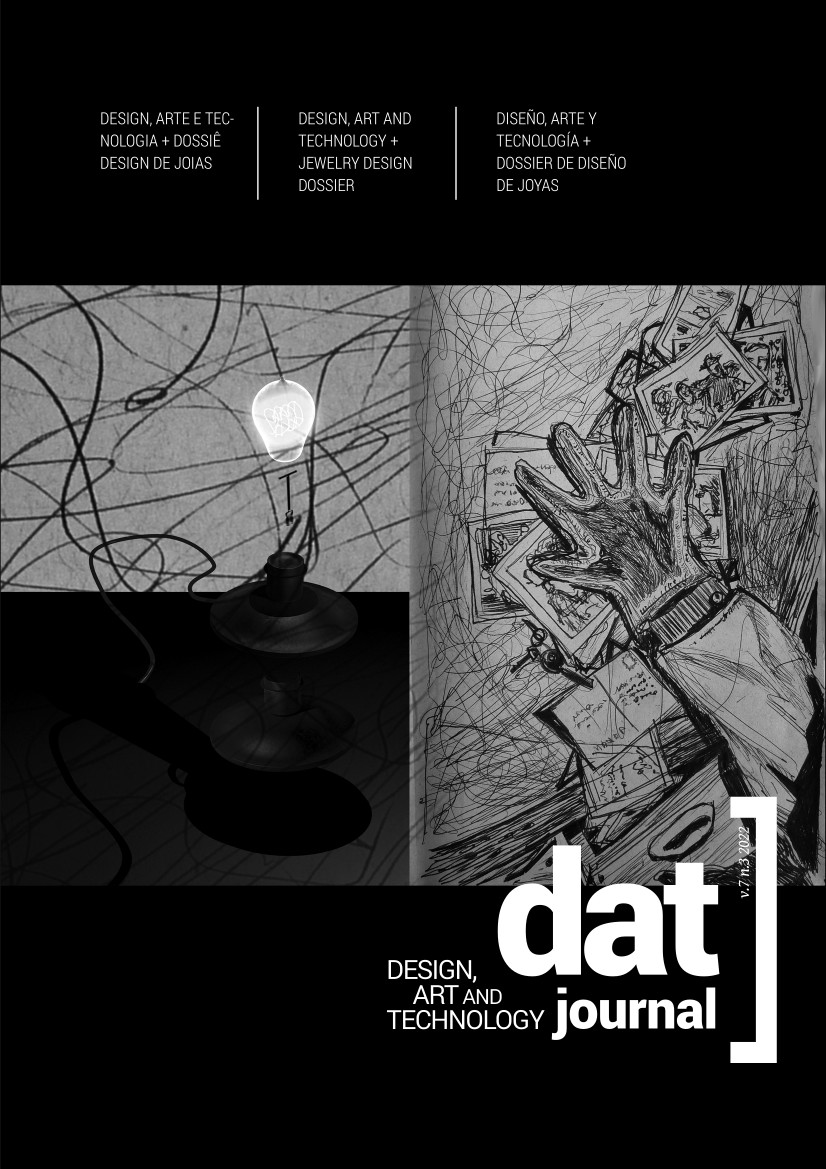Space and interactivity in the remediation of a fictional book: analysis of an example
DOI:
https://doi.org/10.29147/datjournal.v7i3.592Keywords:
Digital book, Space, InteractivityAbstract
Digital media provided a new look at the book. Designed and designed for the computational medium, digital books use media resources different from the printed medium, providing a new type of interaction for readers. The reformulation of a medium inspired by another can be called remediation. Thus, this article presents the analysis of the app book “The Metamosphosis for iPad”, a digital book that proposes a new reading experience for the classic work of Franz Kafka, in order to identify the levels of space and interactivity involved in the book digital. For that, we used the close reading method, whose principle is in the observation of a digital artifact. As a result, the interface space was identified and was built to refer to the personality and feelings of the character of Kafka's work, presenting this to the reader through interactivity and space navigation.
Downloads
References
BIZZOCCHI, J. Ceremony of Innocence: a case study o the emergent poetics of interactive narrative.Master Thesis. Cambridge. 2001.
BIZZOCCHI, J. Game and Narrative: An Analytical Framework. Journal of the Canadian Games Studies Association, 2007.
BIZZOCCHI, J.; LIN, M. B.; TANENBAUM, J. Game, narrative and the design of interface. International Journal of Art and Technology, 4, 2011. 460-479. DOI: https://doi.org/10.1504/IJART.2011.043445
BOLTER, J. D.; GRUSIN, R. Immediacy, Hypermediacy and Remediation. In: BOLTER, J. D.; GRUSIN, R. Remediation. [S.l.]: Cambridge: MIT Press, 2000.
FADEL, L. IMMEDIACY AND HYPERMEDIACY: MIND THE GAP. [S.l.]: [s.n.], 201?.
LOOY, J. V.; BAETENS, J. Introduction: Close Reading Electronic Literature. In: LOOY, J. V.; BAETENS, J. CLOSE READING NEW MEDIA: Analyzing Electronic Literature. [S.l.]: Leuven University Press, 2003.
MACHADO, A. Fim do livro? Revista Estudos Avançados, São Paulo, 8, n. 21, Agosto 1994. DOI: https://doi.org/10.1590/S0103-40141994000200013
MANOVICH, L. The language of new media. London: The MIT Press Cambridge, 2001. DOI: https://doi.org/10.22230/cjc.2002v27n1a1280
MCCLOUD, S. Desvendado os quadrinhos. [S.l.]: Makron Books, 1995.
PINSKY, L. Os editores e o livro digital. Revista do núcleo de estudos do livro, 2013.
RYAN, M.-L. Narrative as Virtual Reality: Immersion and Interactivity in Literature and Electronic Media. In: ______ Literature and Electronic Media. Baltimore and London: The Johns Hopkins University Press, 2001.
RYAN, M.-L. Beyond myth and metaphor: Narrative in digital media. Poetics Today, 23, n. 4, 2002. 581-609. DOI: https://doi.org/10.1215/03335372-23-4-581
RYAN, M.-L. Space, Place and Narrative. In: FÜSSEL, S. Media Convergence. Berlin: Walter de Gruyter, 2012.
SANTAELLA, L. Comunicação ubíqua: repercussões na cultura e na educação. São Paulo: Paulus, 2013.
SILVA, A. C.; BORGES, M. M. Book design program: a transition to a hybrid publishing context. Information Services & Use, 31, 2011. 189-197. DOI: https://doi.org/10.3233/ISU-2012-0648
VIRGINIO, R.; ALMEIDA, F. Do códice ao leitor digital: a reconfiguração do livro na cibercultura. In: NICOLAU, M. O livro digital e suas múltiplas perspectivas. João Pessoa: Ideia editor, 2014.
ZIMMERMAN, E. Against Hypertext. In: BIZZOCCHI, J. Ceremony of innocence and the subversion of interface: Cursor transformation as a narrative device. Melbourne: MelbourneDAC, 2003.
ZIMMERMAN, E. Narrative, Interactivity, Play, and Games. In: WARDRIP-FRUIN, N.; HARRIGAN, P. First Person: New Media as Story. [S.l.]: Cambridge MA, MIT Press, 2004. p. 154-164.
Downloads
Published
How to Cite
Issue
Section
License
Copyright (c) 2022 DAT Journal

This work is licensed under a Creative Commons Attribution 4.0 International License.


























